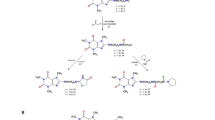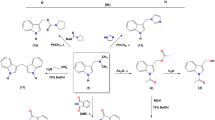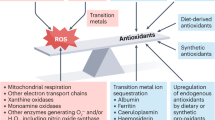Abstract
FURTHER evidence has been obtained to support the hypothesis that certain redox dyes, having partial vitamin E activity, can inhibit the catalytic action of hæmatin in the oxidation of unsaturated fats1.
This is a preview of subscription content, access via your institution
Access options
Subscribe to this journal
Receive 51 print issues and online access
$199.00 per year
only $3.90 per issue
Buy this article
- Purchase on Springer Link
- Instant access to full article PDF
Prices may be subject to local taxes which are calculated during checkout
Similar content being viewed by others
References
Moore, T., Sharman, I. M., and Ward, R. J., Biochem. J., 53, xxxi (1953); 54, xvi (1953); 58, vii (1954); Proc. Nutr. Soc., 12, v (1953).
Tappel, A. L., Arch. Biochem. Biophys., 50, 473 (1954).
Tappel, A. L., Food Res., 18, 104 (1953).
Author information
Authors and Affiliations
Rights and permissions
About this article
Cite this article
MAIER, V., TAPPEL, A. Antioxidant Activity of Redox Dyes. Nature 175, 951–952 (1955). https://doi.org/10.1038/175951b0
Issue Date:
DOI: https://doi.org/10.1038/175951b0
Comments
By submitting a comment you agree to abide by our Terms and Community Guidelines. If you find something abusive or that does not comply with our terms or guidelines please flag it as inappropriate.



